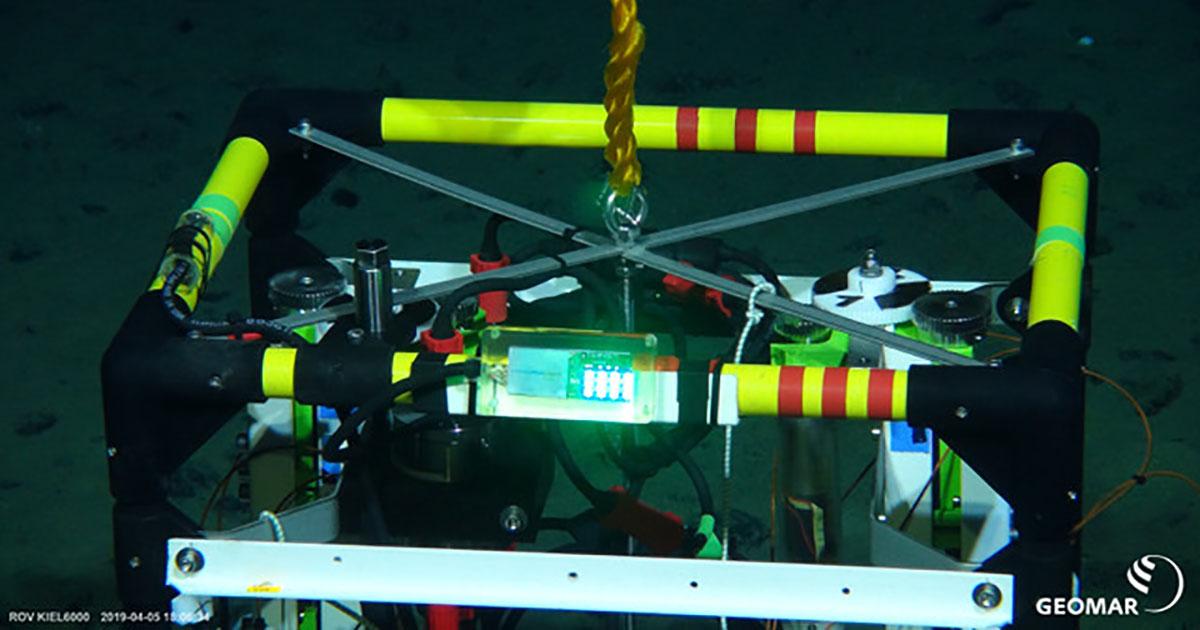During a recent science cruise, Germany’s oceanographic research institutes successfully used Hydromea’s LUMA 250LP wireless node in depths down to over 4000m.
The scientists of the Alfred Wegener Institute (AWI)/Max Planck Institute for Marine Microbiology (MPI) on board the research vessel Sonne were examining the possible environmental impact of deep-sea mining of polymetallic nodules in the Clarion Clipperton Fracture Zone (CCZ) in the Eastern Pacific (PDF of cruise report).
By fitting their in-situ modules as well as the ROV KIEL6000 (GEOMAR) with Hydromea’s LUMA wireless nodes they were able to directly communicate with instruments at over 4000m depth to ensure that their delicate sensors on board are working properly and to reconfigure the measuring program if necessary. The modems performed flawlessly over a series of 15 dives.
This offers a high amount of flexibility and provides significant capacities to work in these demanding environments.
Frank Wenzhöfer, principal investigator for in situ flux studies on the cruise SO268-2
Hydromea’s through-water wireless optical nodes LUMA provide for high-speed and high-bandwidth near-field communication. LUMA offers affordable, portable and low-power high-speed wireless access to the subsea infrastructure down to 6000m depth.
Story by Hydromea





